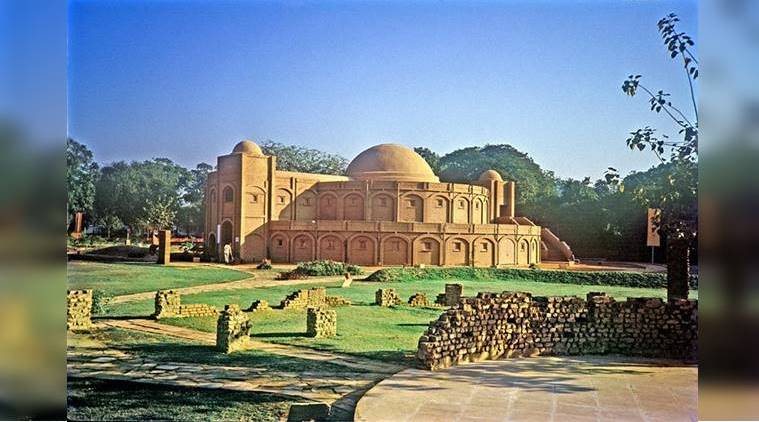 Domes day now: Mati Ghar has been conceptualised around the idea of time. (Rajeshwari Menon Prakash)
Domes day now: Mati Ghar has been conceptualised around the idea of time. (Rajeshwari Menon Prakash)
Mati Ghar at Indira Gandhi National Centre for the Arts (IGNCA), Delhi, saw many firsts for its architect Sanjay Prakash. Completed in the year 1989, in 164 days straight, the 24 arches on the upper level of this arts center, was built in a single day. Made on a budget of Rs 9 lakh, the iconic earth blocks structure — with a ventilation system that uses underground air-ducts — was meant to stand only for a year: the Central Vista Committee only gave permission for a temporary structure at the time. Nearly 30 years later, though, it continues to be the darling space of many artists, who have showcased exhibitions here.
The gallery concept was envisioned by IGNCA’s founding director Kapila Vatsyayan and Oriental art history scholar associated with the University of Bonn, Germany, the late Professor TS Maxwell. Three seminal exhibitions (Kham, Akara, Kaal; from 1986 to 1991) — multimedia exhibits with seminars that looked at time and space across civilisations, disciplines, and texts — placed the IGNCA gallery on the city’s cultural map.
Time was, thus, the central motif in the design of Mati Ghar. Prakash, an advisor with Development Alternatives Group (DA) — the social enterprise that researches on sustainable development — in the late 1980s, was also the structural designer for the building. Well-proportioned, the radii of the three concentric rings of the structure were composed in the proportion of 1:2:3, and its radial division — from the outside to the inside rings — into 12:24:36 equal divisions respectively.
“The divisions of 12 and 24 were meant to denote hours in a day, and 36 is a common number that Greeks and Romans divided the year by,” says Prakash.
The structure was hatted with a stabilised earth block dome, the largest of its time then. Prakash innovated with the material, too, in using stabilised compressed earth blocks as frames and infill, adding cement to the soil mix for increased structural strength — it made the building water resistant, thus avoiding the use of plaster. The play of light and darkness also beautifully comes alive in Mati Ghar. “It is one of the few conceptual buildings with the ability to allow multiple spatial points of view,” says Jeebesh Bagchi, co-founder, Raqs Media Collective.
Mati Ghar, however, is up for demolition. Though the dates have not been finalised, plans for building a national centre for performing arts are on the anvil. “There was an audit of the building done by the Central Public Works Department (CPWD) with structural engineers from IIT Delhi. They said the structure won’t collapse but it’s dangerous. Since then we don’t hold exhibitions inside Mati Ghar,” says Sachchidanand Joshi, member secretary, IGNCA.
“The building was made for Rs 9 lakh in 1989. Today, it will easily cost Rs 2 crore to rebuild or repair,” says Prakash, “As a responsible designer, I need to be aware of when a building’s function is fulfilled. This tearing down could have been done in the mid-90s itself. Maybe, we should celebrate the demolition of the building with no (or very little) ecological footprint. And also celebrate all that this building has taught us.”